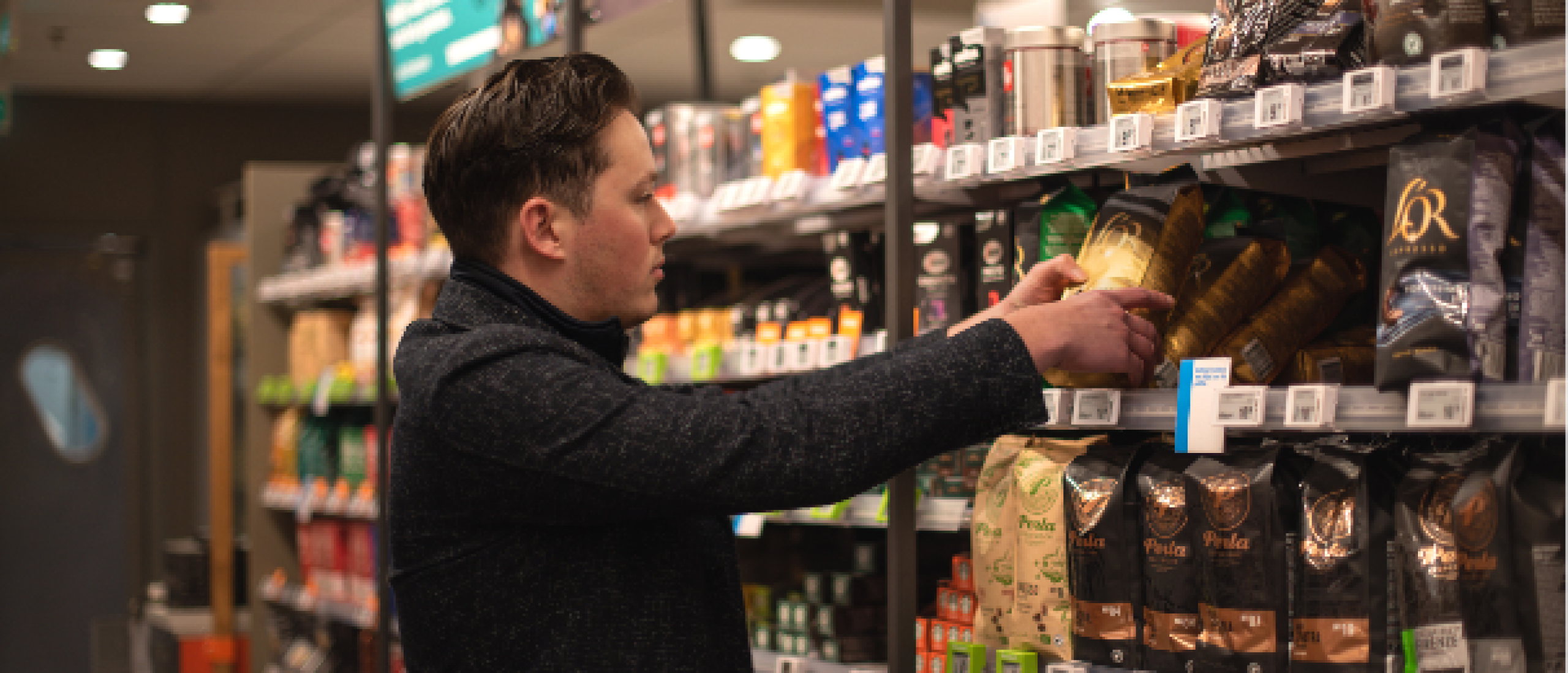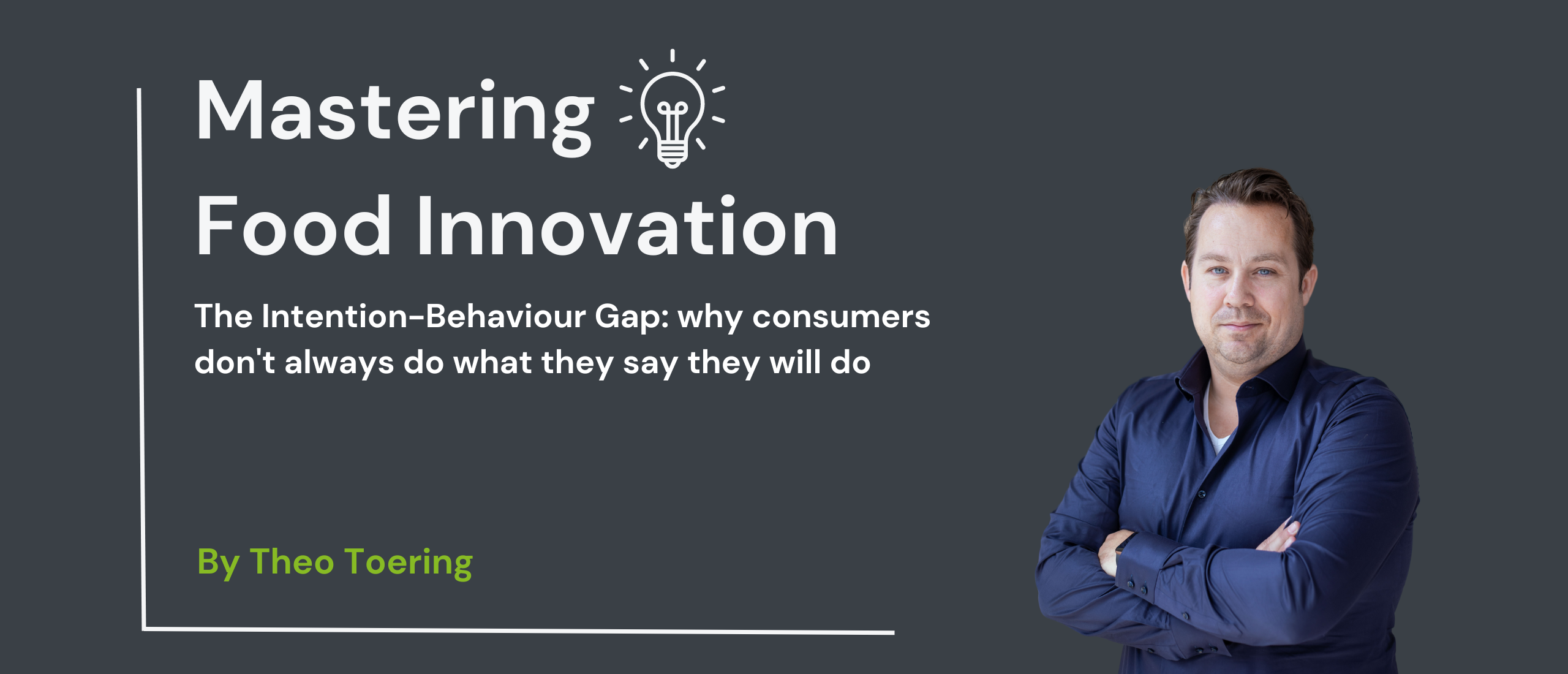Your FMCG innovation, for which the whole team has worked for months or even years, is about to be introduced. During the innovation process, all the lights were on green; consumers seems to have a need for your concept. The results from taste tests, focus groups and consumer panels were all positive. But despite all these positive signs, the rotation figures were still very disappointing after the introduction. How could this happen? The answer to this question is hidden in the differences between online and in-store research.
The importance of a real-life context
Understanding consumer behaviour can sometimes be very difficult. This is because consumers can exhibit very different behaviour in different contexts. In other words, answers to the exact same question can differ as soon as the situation changes. For example, if you were to ask consumers what they think of a particular package during an online survey, it is likely to yield very different answers than if you asked it in front of a shelf on the shopping floor. This is because context largely determines consumer behaviour. For example, the answers in front of shelf may be different because consumers will compare the packaging with that of other competitors on the shelf, for example.
So context is crucial to gauge what consumers really think of your concept. The more realistic the context, the more certain you are that your insights are accurate. This is why we believe in in-store research: by conducting research on the shopping floor, you can be sure you can trust your findings. By testing your concept in-store, you are 100% sure of its potential - even before the introduction!
Opinions matter, but with facts you can be certain
Unfortunately, we often see this happen: FMCG innovations that are solely based on consumer opinions. Consumer opinions can sometimes be valuable, but they can never fully validate your concept. This is because what consumers say does not always match what consumers do. For instance, consumers can be raving about a concept during online research, but the same consumers do not show any buying behaviour after its introduction. That is why it is important to base innovations (also) on factual consumer behaviour. How to do that? We can best explain that through two scenarios:
Scenario 1: You ask via an online survey whether consumers would buy your innovative product at a price of €3.65. Consumers can give their answers with 'Very likely' to 'Very unlikely'.
Because consumers here can only answer the question in a non-realistic context, you only measure their opinions, not their actual behaviour. The answers only give you an indication of the potential of your concept.
Scenario 2: for a number of weeks, you place your product at a price of €3.65 in a number of supermarkets. During and after these weeks, you can see exactly what the weekly rotation of your product is.
In this scenario, you don't measure opinions, but actual consumer behaviour in a real-life context. This allows you to be 100% sure about the potential of your innovative concept and gives you insights into actual consumer behaviour.
A guarantee of 100% category buyers
Something we at Bamboo Brands often have a difficult feeling about are the respondents of online research methods. To do good research, the target audience is of great importance. After all, you want to gather valuable insights from the group of people your innovation is designed for. But how can you be sure you are researching the group of people? Can you determine that from demographics such as gender and age? What we often see happening with online consumer panels is that the group of respondents is selected solely based on demographics. In some cases, however, respondents are asked if they ever buy a similar product, but even then the question arises: how sure can you be of that?
With in-store research, you can keep it simple. Because you conduct research on the shopping floor, in front of the relevant shelf, you can be sure that you are targeting the right group of people, namely the buyers of your product or that of a direct competitor. This guarantee of 100% category buyers gives you the insights you need to further optimise or validate your concept.
Also convinced of the value of in-store research for FMCG innovations?
We believe that in-store research has absolute added value for anyone involved in innovations within the FMCG sector. It is the only type of research that guarantees actual consumer behaviour within a real-life context. However, online research also offers advantages in some situations, ofcourse.
Are you also convinced of the added value of in-store research and do you currently have an innovation issue? Then click here to contact us without any obligation. We are happy to help!






